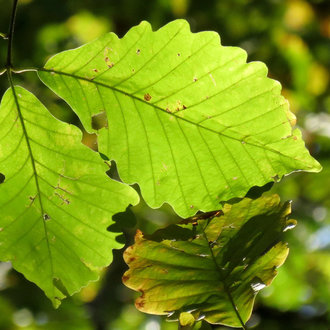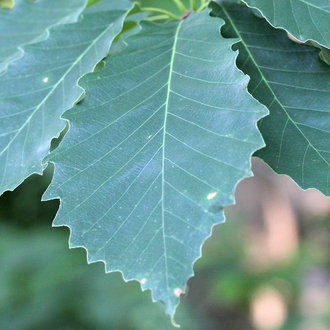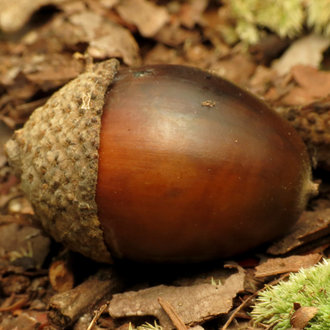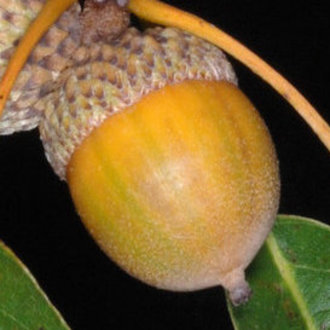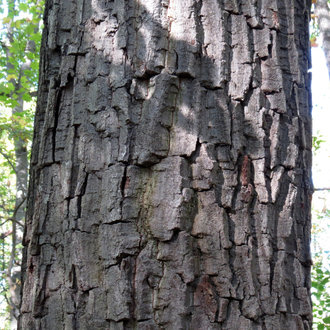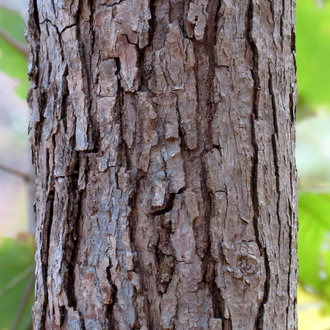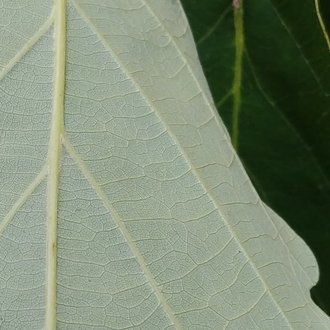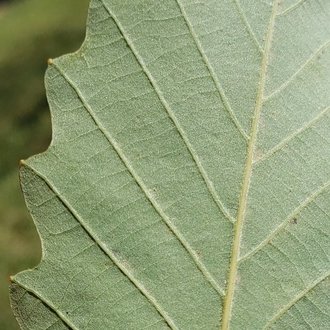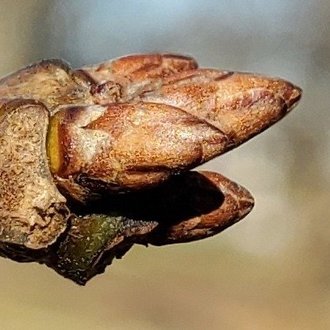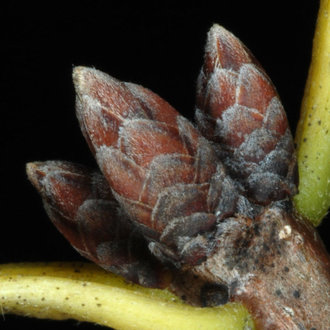Chestnut Oak vs Chinquapin Oak
These two white oaks are frequently confused due to similar leaves, and both occurring in dry, rocky uplands. They are easily distinguished by bark or acorns, and with effort, also by leaves. Chestnut oak is mostly limited to dry, upland, forested sites with acidic soil, in or near the Appalachians, whereas Chinquapin oak is most common on calcium-rich soils, can also occur on moister sites, ranges much farther west, and also occurs in savannas.
Chestnut Oak (Quercus montana) | Chinquapin Oak (Quercus muehlenbergii) |
A native oak of ridgetops and dry uplands with acidic soils, especially in the Appalachians, named for its resemblance to the American chestnut. | A white oak native to North America, preferring soils high in calcium. |
Lobe tips more rounded, angling more outward. Photo © Katja Schulz, CC BY 4.0. | Lobe tips pointier, often curving forward slightly. Photo © Peter Chen 2.0, CC BY 4.0. |
Acorn cap thinner, more tapered at base. Acorn cap scales indistinct; hard to see individual scales. Smaller, more delicate point at tip of acorn. Photo © Katja Schulz, CC BY 4.0. | Acorn cap thicker, flatter at base. Easier to see individual acorn cap scales. Thicker, more robust point at tip of acorn. Photo © Doug Goldman, CC BY 4.0. |
Bark of mature trees has rugged, thick vertical ridges, often with numerous horizontal cracks in each ridge. Ridges are V-shaped. Bark looks more unusual among other white oaks. Photo © Katja Schulz, CC BY 4.0. | Bark is scaley, breaking into thinner plates separated by narrower, shallower cracks. Plates are flat-topped. Bark looks more similar to other white oaks. Photo © Katja Schulz, CC BY 4.0. |
Leaf undersides have only scattered, minute hairs and usually appear hairless without magnification. Lobe tips lack glands. Photo © Briggs Armstrong, CC BY 4.0. | Leaf undersides sometimes have denser pubescence, sometimes visible without magnification or detectable by touch. Lobe tips have small glands. Photo © Andy Deans, CC BY 4.0. |
Buds are light brown, hairless, lack frosted edges. Photo © , CC BY-SA 4.0. | Buds average darker and more reddish-brown, bud scales sparsely pubescent, usually show frosted edges. Photo © Doug Goldman, CC BY 4.0. |
References & External Resources
These short lists show only links helpful for ID. For a complete list of references and resources also covering other aspects of ecology, visit the links section of the full article on each plant, which is the first entry here.



